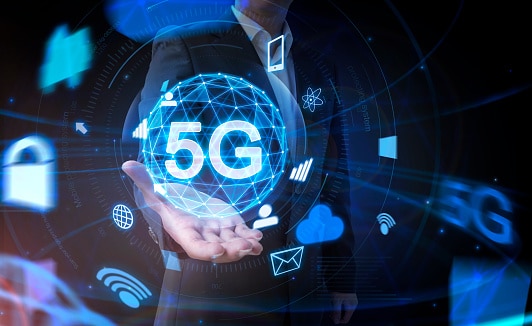5G (fifth-generation) mobile technology is set to revolutionize the way we use and interact with mobile devices. It is the next generation of mobile technology, following the 4G (fourth-generation) standard that is currently in widespread use.
One of the most significant benefits of 5G is its faster speed, which is expected to be up to 100 times faster than 4G. This means that users will be able to download large files, stream high-quality video, and browse the internet at much faster speeds. This increased speed is made possible by using higher frequency radio waves and advanced signal processing techniques.
Another benefit of 5G is its lower latency, which is the time it takes for a device to communicate with the network. This means that the time it takes for a device to respond to a command or request will be significantly reduced. This will make 5G ideal for real-time applications like online gaming, video conferencing, and virtual reality.
In addition, 5G will enable the Internet of Things (IoT) to reach its full potential, with more connected devices able to communicate with each other quickly and reliably. This will have significant implications for industries such as healthcare, transportation, and manufacturing.

However, 5G technology requires new infrastructure, including more cell towers and fiber optic cables, which can be costly and time-consuming to install. Additionally, the higher frequency radio waves used by 5G have a shorter range, so more cell towers are required to provide coverage.
Overall, 5G is set to be a game-changer for mobile technology, unlocking new possibilities for communication, entertainment, and industry. However, it will take time for the technology to become widely available and affordable to the general public.
Here are some additional details about 5G technology:
- Speed and Capacity: As mentioned earlier, 5G technology is expected to offer significantly faster internet speeds than 4G. While 4G networks can deliver data speeds of up to 100 Mbps, 5G networks can potentially provide speeds up to 20 Gbps. In addition to faster speeds, 5G also has the potential to handle a much larger number of connected devices per unit area than 4G.
- Low Latency: 5G technology is expected to have lower latency than 4G, which means that it will be able to support real-time applications such as virtual and augmented reality, autonomous driving, and remote medical procedures.
- Massive IoT: 5G is designed to support massive IoT deployments, where a large number of devices will be connected to the internet. These devices can range from smart home appliances, wearables, and sensors to industrial equipment and autonomous vehicles.
- Network Slicing: 5G technology allows the network to be divided into multiple “slices” that can be optimized for different use cases. This enables the creation of dedicated networks for specific applications, such as autonomous vehicles, which require low latency and high reliability.
- Security: 5G technology offers improved security compared to 4G, with features such as encrypted communication and improved authentication methods.
- Deployment: While 5G networks are already being rolled out in some countries, the technology is still in its early stages of deployment, and it will take time for it to be available everywhere. Additionally, the initial rollout of 5G networks will be in urban areas, and it may take longer for rural areas to be connected to 5G.
- Network Architecture: 5G networks are built using a new network architecture called “network slicing.” This allows operators to create virtual networks that are optimized for specific use cases, such as smart cities, industrial IoT, or consumer applications. Network slicing allows for greater flexibility and customization in network design.
- Spectrum: 5G networks operate on a higher frequency spectrum than 4G networks, which enables faster data transfer rates. However, this also means that the range of 5G signals is shorter, so more cell sites are needed to provide coverage. To address this, some 5G networks are being built using a combination of high and low-frequency spectrum, which allows for a balance between coverage and capacity.
- Edge Computing: 5G networks will enable edge computing, which involves processing data closer to the source of the data rather than sending it to a centralized location. This reduces latency and enables real-time applications. Edge computing is expected to play a critical role in supporting autonomous vehicles, smart cities, and other IoT applications.
- Energy Efficiency: 5G technology is designed to be more energy-efficient than 4G, which is important for reducing the carbon footprint of the telecommunications industry. Some 5G networks are being built using renewable energy sources, such as solar or wind power, to further reduce their environmental impact.
- Compatibility: While 5G is designed to be backwards compatible with 4G, some older devices may not be compatible with 5G networks. This means that users may need to upgrade their devices to take advantage of the benefits of 5G.
- Cost: The deployment of 5G networks is expected to be more expensive than 4G due to the need for more cell sites and other infrastructure. This could lead to higher costs for consumers, although competition in the market may help to keep prices down.
Overall, 5G technology has the potential to transform the telecommunications industry and enable new applications and services that were not possible before. However, there are still challenges that need to be addressed, including the need for more infrastructure, the compatibility of older devices, and the cost of deployment.

